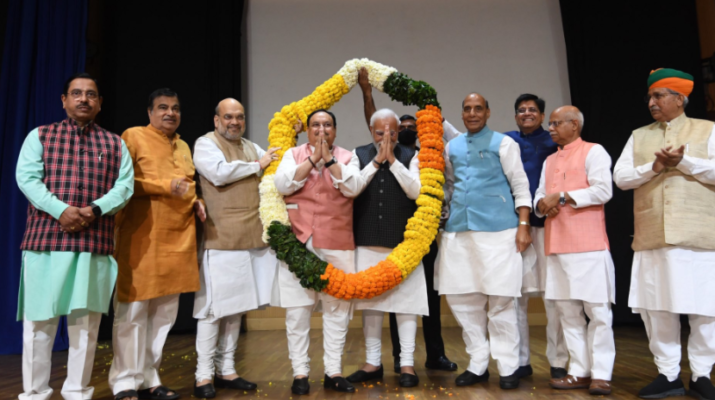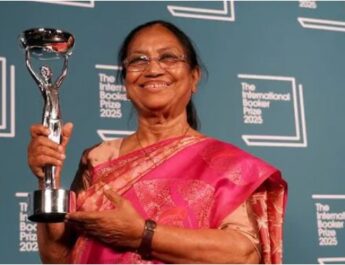BJP has scored a century for the first time in the Rajya Sabha under Modi-Shah rule. In the Upper House, the BJP has made its number of MPs 101, setting a record. There was more momentum after 2014 and during this time the party added 46 MPs. Significantly, the foundation of BJP was laid on 6 April 1980. The party has achieved this feat in the Rajya Sabha after traveling 42 years. Earlier, Congress had touched this magical figure in 1988 and remained at this peak for just two years.
Political journey of BJP to Rajya Sabha in 42 years?
Initially, the BJP had 5 MPs in the Rajya Sabha. These included Jagannath Rao Joshi from Delhi, Ram Lakhan Prasad Gupta from Bihar, Mohinder Kaur from Himachal Pradesh, Hari Shankar Bhabhada from Rajasthan and Jagdish Prasad Mathur from UP.
A few months later, JK Jain from Madhya Pradesh, Ashwani Kumar from Bihar, Pyare Lal Khandelwal from Madhya Pradesh and Jaswant Singh from Rajasthan were entered in the Rajya Sabha.
In 1982, BJP’s founding member president Lal Krishna Advani reached the Rajya Sabha from Madhya Pradesh. In such a situation, within two years of BJP’s existence, in 1982, the number of BJP MPs in the Rajya Sabha had increased to 10.
In 1984, Vijay Raje Scindia from Madhya Pradesh, Kailash Pati Mishra from Bihar and Shankar Singh Vaghela from Gujarat got elected from BJP and reached Rajya Sabha.
BJP MPs were once in Rajya Sabha more than in Lok Sabha
In the 1984 Lok Sabha elections, only two BJP MPs won. At that time BJP had more number of MPs in Rajya Sabha than in Lok Sabha. After the 1989 Lok Sabha elections, as the BJP’s influence in North India increased, the number of MPs in the Rajya Sabha also increased in the same sequence.
Modi-Shah duo intensified their batting
Since the beginning of the Modi era in 2014, the pace of increase of BJP MPs in the Rajya Sabha has accelerated. The party then had 55 MPs. In eight years, the party added 46 MPs.
In the elections held for 13 seats in different states till 31 March 2022, BJP’s 4 seats increased.
BJP’s ally UPPL’s candidate Ravangra Narzari won in Assam. In this way, the BJP alliance gained a total of 5 seats. On the other hand, Aam Aadmi Party’s candidates were elected unopposed in 5 seats. In Tripura, BJP state president Manik Saha became a Rajya Sabha MP.
The BJP won all the four seats in the three Northeast states of Assam, Tripura and Nagaland. Dr. Sikandar Kumar of BJP won the fifth seat from Himachal Pradesh. S Phangnon Konyak of BJP has been elected Rajya Sabha MP from Nagaland. BJP’s Pabitra Margherita won from Assam.
On the other hand, Congress suffered a loss of five seats.
BJP benefits by forming government in UP, Uttarakhand
More Rajya Sabha elections will be held in some states in June, July and August. In such a situation, due to the formation of government in Uttar Pradesh, Uttarakhand, the loss which the BJP was suffering from Rajasthan, Jharkhand, Chhattisgarh, Punjab and other states, will be compensated to a great extent. BJP’s seats will decrease from Andhra Pradesh, Chhattisgarh, Maharashtra, Rajasthan, Jharkhand, but some seats will increase from UP, Uttarakhand. In such a situation, only one or two seats will make a difference.
Congress will be compensated from Rajasthan, Chhattisgarh
Congress has lost five seats in Assam, Punjab, Himachal due to lack of government.
Further, due to the defeat in the Uttarakhand elections, the Congress is going to lose one seat in the Rajya Sabha. Congress will be compensated to some extent by Rajasthan and Chhattisgarh. Three seats will be available from Rajasthan and two from Chhattisgarh.
Congress dominated in Rajya Sabha in 1988
In 1988, the Congress had 108 members. Then the number fell to 99 after the biennial elections in 1990, to 72 between 2012-13, and the number of Congress members continues to decline.
Seven will be nominated before May 3
Seven Rajya Sabha MPs will also be nominated by the central government before May 3, as the term of six nominated Rajya Sabha MPs ends on April 24, 2022, while the term of one MP is ending on May 3.




